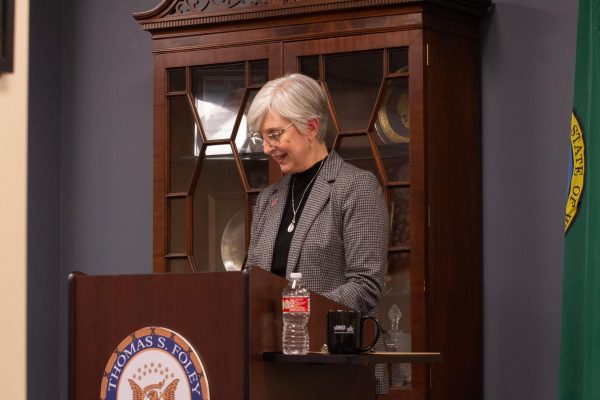Unified rubrics help students learn
October 15, 2015
WSU hosted its second of 10 live-stream, faculty-led workshops on Wednesday, focusing on creating learning-based rubrics across academic disciplines.
“A lot of WSU faculty are doing great things and we want to share those successful teaching practices,” said Rebecca Van de Vord, associate director of academic outreach and innovation at WSU.
The purpose of the workshop was to train WSU faculty across all departments to craft the most effective writing rubric, which can be used to teach students in a variety of class sizes and academic areas.
“With a good rubric, I can grade 50 papers in the time of a Monday night football game, without commercials,” said Bill Condon, a presenter and WSU English professor.
Condon defined a good rubric as a document that maps outcomes and transforms them into standards, while also creating a shared language so students can better understand the grades they receive.
“The purpose of a rubric is to turn a qualitative description into a quantitative number,” Condon said.
Students often don’t comprehend why they receive the grades that they have and what they can do to improve, he said. His method involves getting student feedback early in the course so he can create the rubric most appropriate for that class.
“They learn so much from the circling of a number on the rubric because of the descriptors we’ve been developing,” Condon said.
In detail, Condon’s rubric-creating method takes the first peer review assignment and has the students look for the strengths in each other’s writing. After they have found their strengths, they contribute to the creation of the rubric, making it a part of the classroom process.
“It’s really important that what the students give you stays in that rubric,” Condon said.
Condon said student feedback can be modified to fit the goal of the class, while also respecting the institutional outcomes that need to be met.
Condon said student ideas should stay visible in the final rubric.
“I use it mostly for grading,” said Richard Rupp, geographical information systems professor at WSU. “But I’ve seen some arguments that it stifles creativity and makes assignments seem cookie cutter.”
Condon stated that college level rubrics should be specific to the discipline of study, and also focus on what the students should strive for, quality writing.
“Good writing in an English course is not good writing in an engineering course, they have to understand the language,” Condon said.

















